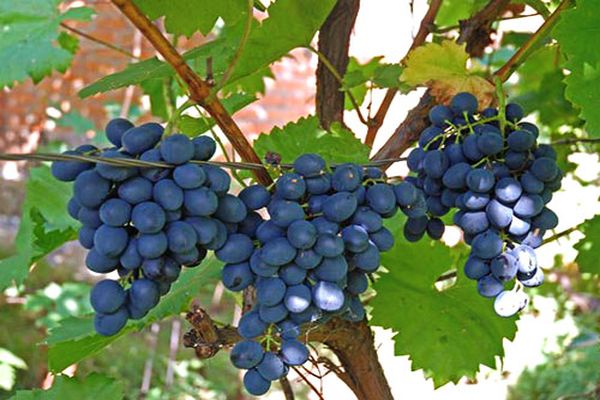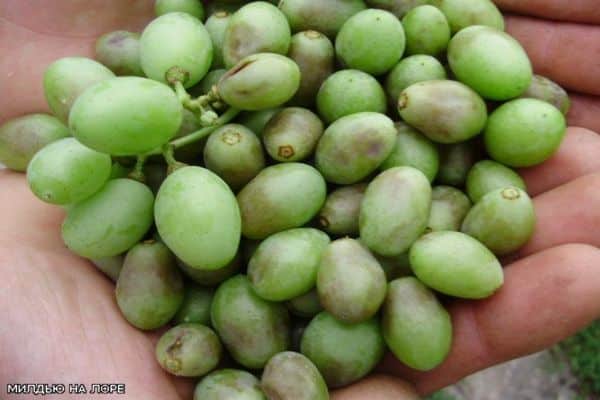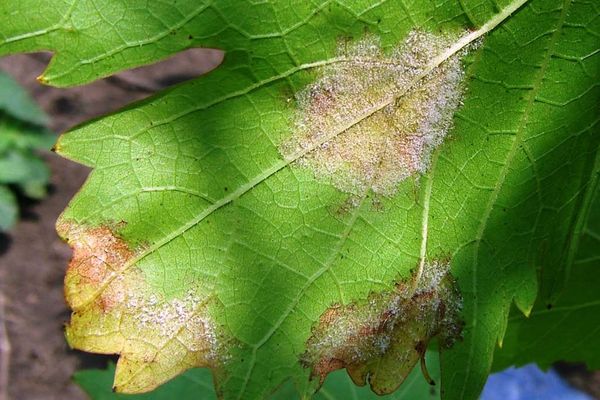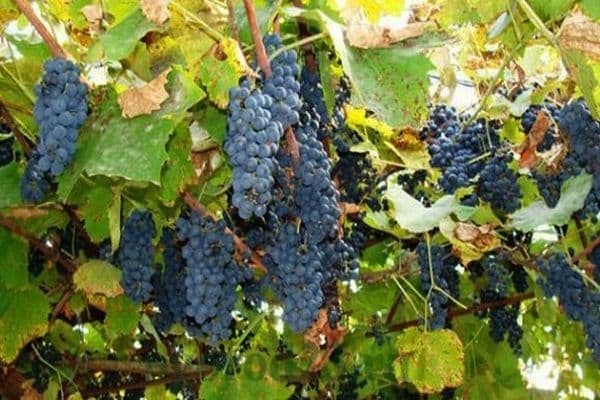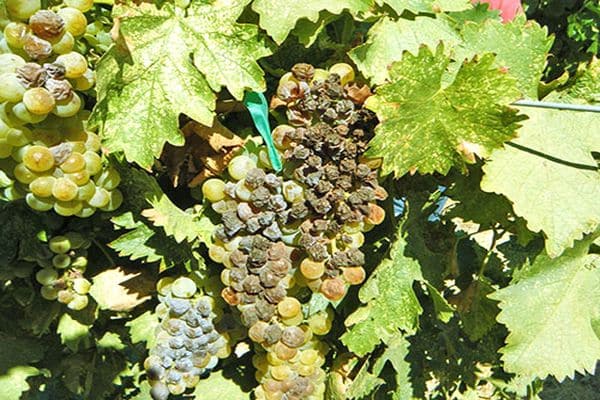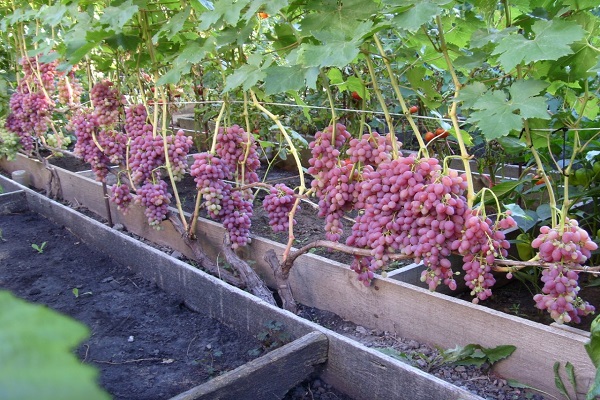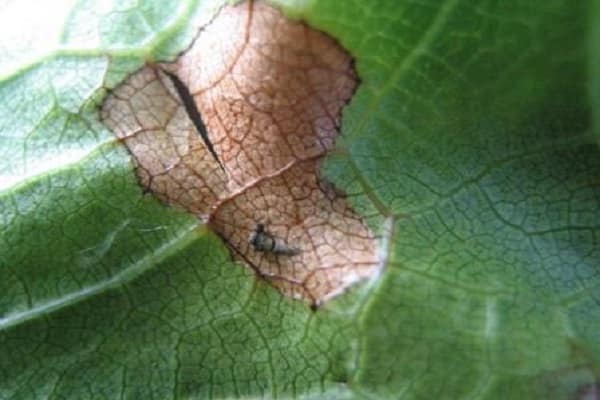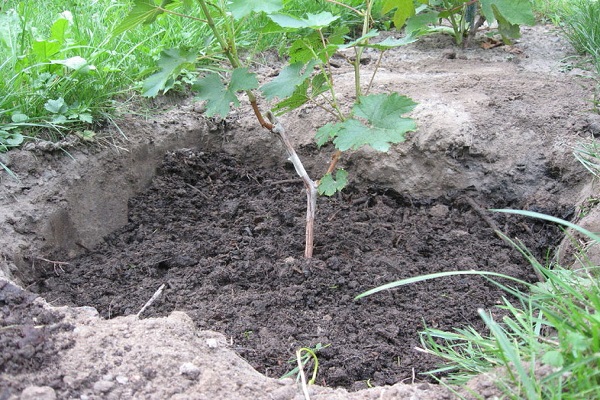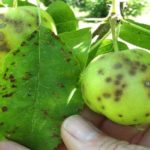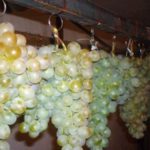Grapes are a plant known for several millennia. Delicious, aromatic clusters, which are quite difficult to grow, seem to be filled with sunshine and contain a huge amount of useful substances. A vine, like any other plant, can get sick. Grape mildew is a serious problem. Having discovered a problem, it is necessary to immediately begin the fight against the disease so as not to destroy the entire vineyard.
What kind of disease is this?
Mildew, a fungal infection of grapes, ranks first among the diseases to which European vineyards are exposed. The disease was brought to Europe in the 19th century from North America along with infected vines of new varieties, and was first discovered in England.
Due to the peculiarities of the European climate, the disease began to spread rapidly, affecting the local grapevine, destroying the entire crop in a short time. Soon, mildew spread throughout the continent, the vineyards of France and other European countries were infected, significantly reducing the number of grapes and ruining winemakers.
Causes infection of the omyocete - a fungus-like organism, a representative of the Pyronosporaceae family, the disease is also called downy mildew of grapes.
First, the green leaves of the grapes become covered with light yellowish-oily spots. In large leaves, yellowness may appear along the veins; under conditions favorable for the fungus (warm, humid weather), the disease begins to progress rapidly. On the back of the leaves, in spots, a barely noticeable whitish fluff appears.
If urgent measures are not taken, the shoots dry out, the ovary is quickly damaged and the leaves fall off. Of course, in this case you no longer have to wait for the harvest; the main thing is to get rid of mildew on the grapes as soon as possible and preserve the vine.
What is the difference between mildew and oidium?
If mildew is called downy mildew, then oidimum - the second common and very dangerous fungal disease of grapes - is simply called powdery mildew.
A white smoky coating on the leaves (from a distance it seems that the plants are covered with ash), damaged, bursting, oozing berries, as if dusted with flour - all these are symptoms of odium.If the disease is not treated, a thick layer of plaque becomes like felt, cracked berries emit a rotten smell, the grape yield is significantly reduced, and it is no longer suitable for processing.
Important: mildew appears on the back side of the leaves, and a whitish fluff forms on the underside; oidium affects the outer part of the leaf, covering it with a coating.
To treat vineyards against podium, preparations containing sulfur are used. The first treatment is carried out in the spring, after removing the cover (the vine must first be ventilated for several days); the plant is sprayed a second time after harvesting. Azophos is used for processing. Sulfur should not only get on the bushes; the soil under the bushes and around the plant is covered with fungicide.
If you do not take preventive measures and do not treat emerging diseases in a timely manner, this dangerous “couple” can completely destroy the vineyard in a matter of days. Plants stop growing and bearing fruit, do not tolerate the coming winter well and, with a high probability, will get sick next year.
Causes
Spores of a dangerous fungus that causes mildew on grapes are resistant to cold. They overwinter safely in fallen leaves. The first spring rain, hitting the soil, lifts them, attaching to the lower leaves, and mildew quickly spreads throughout the plant. If this is accompanied by warm (+20-27 °C) and humid weather, the rapid spread of the disease becomes almost inevitable. After 5-20 days, the first signs of infection are noticeable.
Wind helps spread the fungus to new areas. If plants are planted too close to each other, the disease quickly spreads throughout the vineyard.Warmth and humidity reduce the time required for the development of mildew; under favorable conditions, the fungus can reproduce up to 8 generations. In dry weather and air temperatures above +30 °C, the fungus does not survive, so it is not typical for Central Asia.
Possible symptoms
The main symptom and sign of the development of mildew is the appearance of yellowish oily spots on the front side of the leaf. On the inside it is covered with whitish fluff, which is better visible on young foliage. Then the spot grows, becomes reddish-brown, the leaf dries out, curls and falls off, allowing the spores to begin a new cycle.
Young shoots and flowers of the plant are especially quickly affected. Berries infected with downy mildew become dark and wrinkled, they dry out and crumble, giving the bunches an unattractive appearance. In severe cases, branches are affected.
Young shoots stop growing, and vines affected by the disease shed their leaves prematurely.
Mildew control measures
Treatment of grape mildew is carried out using chemicals and folk remedies. Preparations based on copper, lime and sulfur are destructive to the fungus. Spraying is carried out several times per season, depending on the susceptibility of the variety to this disease.
Important: the fungus gets used to the drugs and develops resistance, therefore, if the vineyard is sprayed more than 3 times per season, it is necessary to diversify the arsenal of products.
The varieties that are most attractive to the fungus, for example, Kishmish, are processed throughout the growing season, every 2-3 weeks.
Fighting mildew is a whole set of measures that allows you to save the harvest. In this case, the affected leaves and clusters must be torn off and destroyed (buried or burned) - they cannot be used as compost.
Pruning old grapevines and disposing of leaves helps prevent the disease from developing in the new season. Mulching the ground around the plant is also a measure to protect the vineyard.
Excess nitrogen in the soil and lack of potassium can trigger a disease outbreak.
Methods and means for processing grapes
Copper-based compositions (copper sulfate, Bordeaux mixture) are effective as a preventive measure. This treatment was widespread, so today its effectiveness has decreased somewhat - the fungi have simply developed resistance to the drugs.
Grape processing against mildew is carried out in several stages.
To treat disease-affected vineyards, complex fungicidal agents are used, which can immediately combat mildew, podium, spider mites and felt mites. Stages of protective measures:
- The first treatment of grapes is carried out in the spring, after the temperature rises to +8 ° C. Plantings are treated for preventive purposes with a 3% solution of copper sulfate or Bordeaux mixture.
- The next treatment for mildew is carried out after the first leaves appear, using: Delan, Horus, Hom.
- During the flowering phase, the plant is treated twice: the first time before flowering, the second time after the grapes have faded. Use Delan, Strobi and other suitable drugs.
- During the ripening of the berries, when they gain juice and grow intensively, the grapes are not sprayed with fungicides. During this period, to protect the grapes, it is possible to use Baikal and Fitosporin, but it is still better not to use chemicals.
- The last treatment of grapes with drugs is carried out for preventive purposes, after harvesting, in August. Treatment is carried out with copper or iron sulfate; fungicides can be used.
When choosing how to treat plants, you should remember that when using chemicals, the preparation of working mixtures is carried out in strict accordance with the manufacturer’s instructions available on the packaging, outdoors or in a well-ventilated area.
All work (preparing the solution, spraying) is carried out using protective equipment: glasses, rubber gloves, a protective apron. After treating the plants, you should take a shower.
Folk recipes
Not everyone wants to treat their own vineyard with fungicides, especially if there are not very many grapes on their dacha plot. In this case, treatment is carried out using folk remedies. At the same time, not only the vine is disinfected, but also the ground underneath it, because there may be fungal spores there.
For the purpose of prevention, the soil under the grapes is treated with tansy decoction.
300 grams of a fresh plant or 30 grams of a pharmaceutical preparation are poured with 10 liters of water and infused for a day, then boiled for 2 hours, and after cooling, water the ground around the plant with undiluted infusion.
To protect against mildew, the vine is sprayed with an extract of wood ash with the addition of laundry soap. To prepare the working solution, a kilogram of ash is dissolved in a large bucket of water and infused for 1-3 days. The mixture is diluted 1:10, to each bucket of the finished solution you need to add 3 tablespoons of liquid laundry soap. The vineyard is sprayed with this mixture.
Another method is spraying grapes with potassium permanganate solution. To do this, carefully dissolve a teaspoon of the product in 10 liters of water.
In addition, solutions of soda ash or baking soda are often used for processing.
Experienced gardeners spray grapes with an infusion of rotted straw, which is infused for a week - this is one of the oldest folk methods of protecting grapes from mildew.
Of course, folk remedies are most effective in the initial stages of infection, and they have to be used much more often than fungicidal preparations, but they can be used without fear of containing toxic substances in the berries.
Grape varieties resistant to mildew
Thanks to the work of breeders, today we have obtained mildew-resistant grape varieties that develop well in the Russian climate. Examples of such plants are: Timur, Vostorg, Agat Donskoy, which also have excellent resistance to frost. The Monarch variety is also resistant to mildew, but it is often affected by oidium.
When planting a vineyard, in order to avoid troubles, you should choose zoned varieties, bred taking into account the climate and humidity in a certain area.
What to do for prevention
There are several rules that can prevent losses from mildew. To prevent the disease you should:
- do not place plants too often. The distance between rows of plantings is 3 meters, between neighboring bushes - 1.5-2 meters;
- regularly mulch the soil under the vine;
- use drip irrigation;
- prune grapes, remove fallen leaves and dead old branches;
- After harvesting, before winter shelter, treat the plants.
Simple recommendations for protection and timely prevention can reduce the risk of developing not only downy mildew, they will help resist oidium and other ailments, and protect plantings from pests.
Growing good grapes is not an easy task.Preventive measures for plant treatment will reduce the likelihood of disease. The vine requires careful careful care, however, if you manage to do this, looking at the brushes filled with juice will certainly lift your spirits.
And we can talk for a long time about the health benefits of high-quality grape juice or homemade wine in superlatives.



